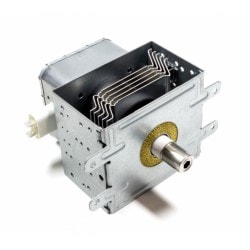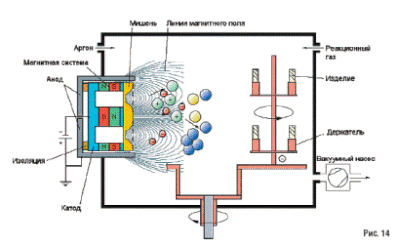
Every thing, be it an electrical appliance or some kind of mechanism, has its expiration date and resource of work. In our world there is nothing eternal and the magnetron is no exception. The resource of operation of the magnetron directly depends on the mode of its operation. The more intensive the microwave oven, the less the magnetron will serve. In the course of long operation, the magnetron "ages and wears out", resulting in such a malfunction as the loss of cathode emission, i.e. The cathode region is depleted with time, and it loses the ability to emit electrons into the working region, which causes the magnetron to stop working.
The second malfunction that may occur during long operation is the breakage of the filament. In this case, you can give an example of a conventional incandescent lamp, no matter how much it would not shine to you, sooner or later, it will still burn out. As a result of the breakage of the filament, there is approximately the same situation as in the first case. The cathode is not heated, hence - there is no emission. These two faults are often encountered in practice, and if we theorize theoretically, we can assume the occurrence of a third fault as a result of prolonged operation of the furnace - this is a failure of the magnetron magnet system. In the event of a malfunctioning of the magnetic system, the electrons will simply fly from the cathode to the anode, they will not "circulate" along the anode surface and the microwave oscillations in the resonators will not arise. In practice, it was in magnetrons that I did not see this, but it was found in other devices containing permanent magnets. From time or under the influence of external factors, a permanent magnet can lose its properties (demagnetize).
How to test the efficiency of the magnetron? In the case of the breakage of the filament, it's very simple - you need to take a conventional tester, switch it to the resistance measurement mode (preferably one of the first), and touch the terminals of the magnetron power supply by disconnecting at least one of them from the power circuit. In the case of a filament, the tester will show a resistance of the order of 2 to 3 Ohms, almost a short circuit (the upper figure). If the thread is broken, then the device will show "infinity", i.e. does not respond to touch probes to the terminals of the magnetron. But do not rush to throw out such a magnetron. To ensure the breakage to the end, carefully remove the magnetron filter cover and make sure that the filter coils securely connect the power terminals with the through capacitors and the magnetron terminals. Often happens that because of poor quality welding, one of the coils breaks from the output of the pass-through capacitor or from the output of the magnetron (in the lower figure the places of possible rupture are indicated by yellow arrows). This magnetron can still be restored without spending money on a new one.
Check passing capacitors As for the loss of emission, it is best to apply the replacement method to a known good magnetron. But before changing, you need to make sure all the supply voltages are present.
Another very common malfunction of the magnetron is the breakthrough of the pass-through capacitors of the magnetron filter. Check it out, the same simple, by the same tester. In the resistance measurement mode, you need to touch the probes of the device with one of the power terminals of the magnetron and its housing. If the instrument shows "infinity" - the capacitors are in good order (bottom picture). If the device shows any resistance, then one of the capacitors is broken or in a leak. If there are other serviceable capacitors, they can simply be replaced, if not, then it is better to replace the magnetron with a known good.

Separately, I would like to say about the supply voltage. The fact is that the magnetron is powered by a non-stabilized power source and if the voltage has dropped in the network, then the heating voltage required for optimal heating of the magnetron cathode will drop - hence, the emission will be weaker and the magnetron will not develop the required power. The anode voltage required to create an electric field between the cathode and the anode will also drop. If the supply voltage is low, the oven will warm slightly or not at all. So, if your stove suddenly stops heating your cutlets for some reason - do not climb inside right away. First, measure the voltage in the network and if it is much lower than the nominal value - then the oven does not have to do with it.

Write a comment